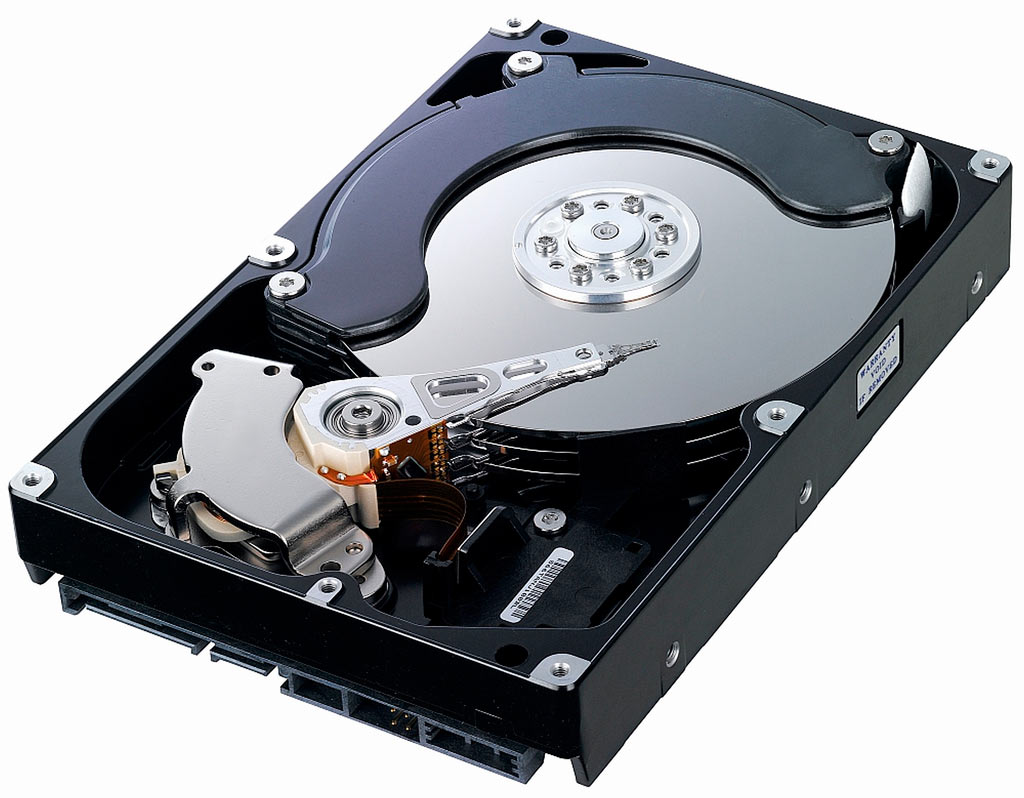We all know what a hard drive looks like, but what is actually inside, and how does it all operate?
The storage unit, such as a hard drive or solid-state drive, is the most important component of a computer. Hard disk drives very different to the ones we see today in modern PCs and laptops were first developed for Mainframes and mini computers in 1956, with the first IBM drive being the size of two refrigerators; now the standard size of a hard disk drive is between 2.5” and 3.5”, around a million times smaller. Internal hard drives reside in a drive bay, connected via an interface such as SATA or ATA.
The platters
The platter is a flat aluminium disk, although they may also be glass or ceramic, and this is where the data on a hard disk drive is stored magnetically. A hard drive may have multiple platters stacked up depending on storage capacity. All modern hard drives have two or more platters, but very large storage capacity hard drives may have platters running into double figures. The platters are where data is written as a series of 1s and 0s magnetically, which make up your files. For durability, platters are now coated with a retentive substance such as oxide.
Spindle and spindle motor
The spindle is the rotating shaft that keeps the platters in position, and rotates the platters. The speed at which the platters are rotated is measure in revolution per minute (RPM), and most modern hard drives spin at least 7200 RPM; enterprise-class drives can spin up to 15,000 RPM. The spindle motor is what actually causes the platters in the hard drive to rotate. If you hear a beeping or chattering noise, the spindle motor may have failed, and the platters won’t be able to spin. The spindle motor, like most of the components found within a hard drive, is delicate, and failure can happen for a number of reasons, but the most common is physical trauma.
The read/write heads and actuator arm
The read/write heads sit on the tip of the actuator arm, and they read from and write to the magnetic platters. The heads themselves are actually tiny, and hover just a few nanometres above the spinning platters below. If the read/write heads hit the spinning magnetic platter below, this can result in a head crash. Like with spindle motor failure, the most common cause of a head crash is physical trauma, although hard drives can fail with age.
